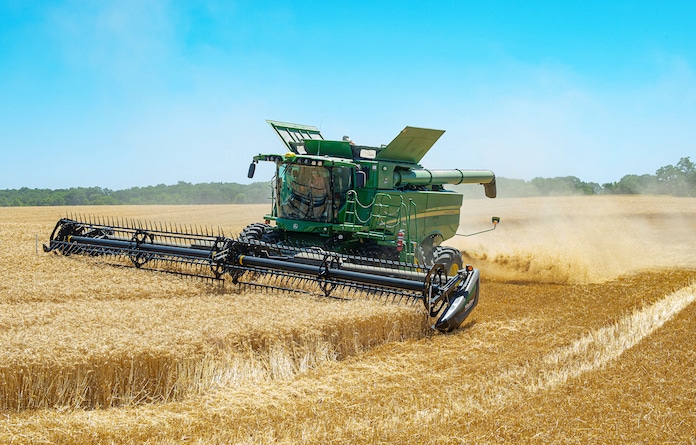Green to gold, then back to green?

Over recent weeks, Monroe County and surrounding areas have seen the winter wheat crop ripening from green to gold.
But will it equate to green in the form of money in the pockets of local farmers?
Motorists are seeing dust clouds in fields as combines start to bring in the year’s first crop. As the wheat harvest moves ahead, farmers are hoping the sale of this crop will offset rising costs and leave them at least modest profit for coming seasons and years.
Agriculture is a high-power part of this region’s total economic picture. Like other business sectors, farmers are being pounded by rising costs for fuels, fertilizers and virtually everything else they need now. For example, diesel fuel costs more than twice as much as last year and nitrogen fertilizer is three times as much.
Many of these costs cannot be put off and must be met at delivery if farmers are to continue feeding America and the rest of the world.
“Almost half of the season’s wheat yield in this area has been harvested. The results are slightly less than the record year of 2021, but they are excellent – both in terms of yields per acre and quality. The quantity being harvested is in the area of 80 bushels per acre and there has been virtually no vomitoxin,” Gateway FS Grain Division Manager Adam Parker said.
Vomitoxin is a scab on wheat kernels that emerges when there is excessive rain while the wheat flowering and kernels are filling out.
Parker said the target of 13.5 percent for moisture content of harvested wheat is being met or exceeded.
“We saw it as low as 11 percent before last Friday’s rain. It bumped up some after that, but is coming down again,” he said.
Critical in this time of elevated costs, wheat is selling for about $10 per bushel compared with about $7 at this time last year. That’s how farmers are hoping their results will result in adequate “green” to meet costs or even show a profit.
Dale Haudrich of Hecker reported on the harvest from his combine on Monday.
“I’m seeing 70 to 80 bushels per acre here – good quality – no vomitoxin,” he said.
Haudrich farms his own land as well as for others.
Mike Wittenauer replied to the Republic-Times from his tractor as he was planting a crop of beans soon after harvesting wheat.
Wittenauer said he would be finished bringing in wheat Monday afternoon and was seeing good quality with a 70-80 bushel per acre yield.
“We have taken some wheat to market, and it showed a test weight of 63.5 pounds per bushel,” he said.
Test weights are another measure of moisture content, and a figure over 60 pounds is above average. Excess moisture results in lower test weights.
Looking west, John Niebruegge of Valmeyer – who farms in the bottoms alongside the Mississippi River – said he should be done combining by Monday afternoon.
“I’ve got about 65 of the 600 acres we planted in wheat last fall to bring in. Yield and quality are both good again,” he said while adding they didn’t quite reach last year’s record numbers.
The wheat harvest will be followed by beans and corn planted this spring. Beans will also be planted in the fields being emptied of wheat to produce a second crop this fall.
Both corn and beans are currently doing well in the heat and humidity. Results depend on the weather that comes in the next three months, however.





